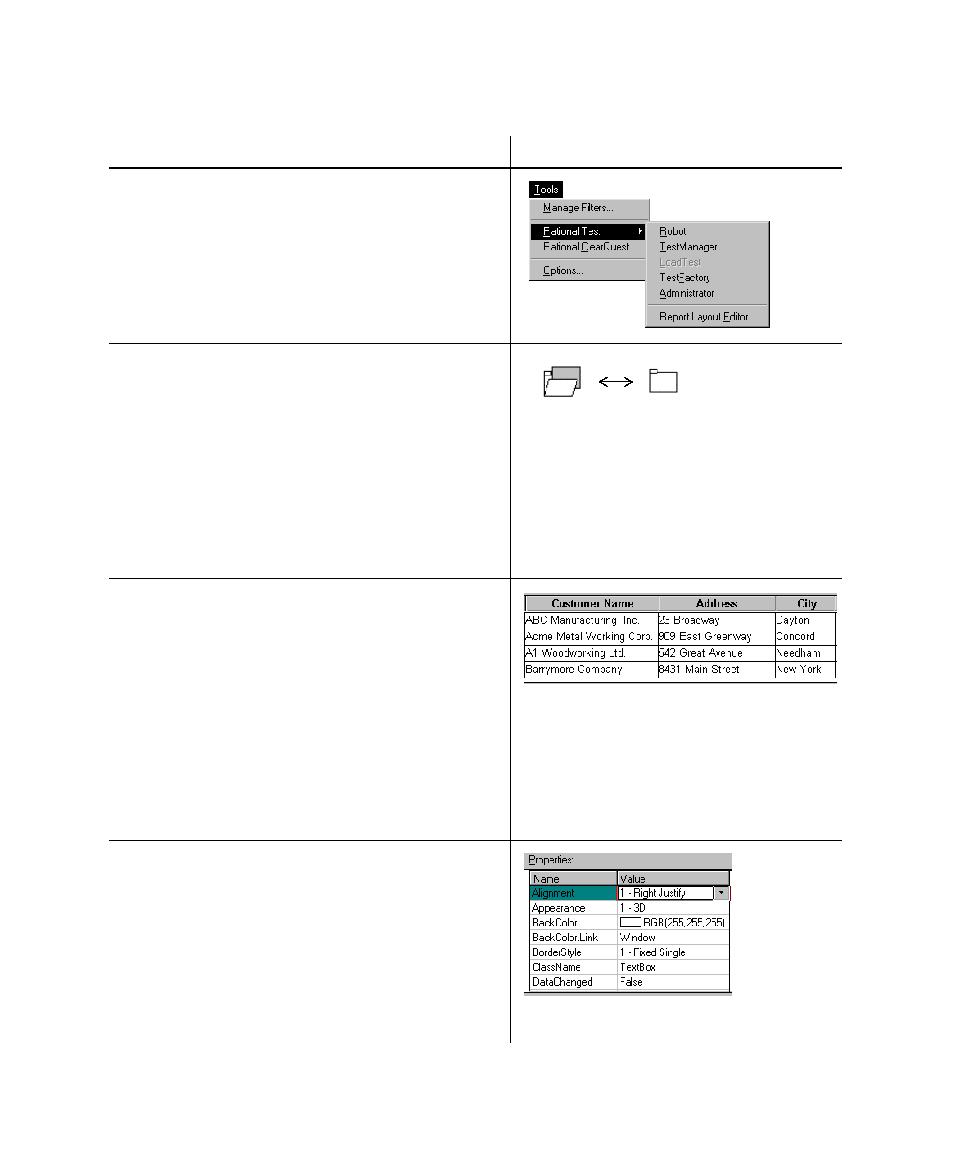
Menu, Module Existence, Object Data
Captures and compares the menu title, menu items,
shortcut keys, and the state of selected menus. Robot
records information about the top menu and up to five
levels of submenus. Robot treats menu items as objects
within a menu and tests their content, state, and accelerator
keys regardless of the menu item's location. (You can also
use the Object Data verification point to test a menu.)
Verifies whether a specified module is loaded into a
specified context (process) or is loaded anywhere in
memory. Each process has its own context, which includes
a set of loaded modules. When you create this verification
point, you select the name of the module. You can also
select the name of a context (process), in which case the
verification point tests whether the module is loaded into
that process. If no context is specified, the verification
point tests whether the module is loaded anywhere in
memory.
Captures and compares the data inside standard Windows
objects. Also provides specialized support for
environment-specific objects such as Visual Basic Data
controls, ActiveX controls, HTML and Java objects,
PowerBuilder DataWindows, and Oracle Forms base-table
blocks.
Robot provides many data tests that are used with the
Object Data verification point. A data test is a mechanism
for capturing the data of objects. For information about
creating your own data tests, see Appendix A, Working with
Data Tests.
Captures and compares the properties of standard
Windows objects. Also provides specialized support for
environment-specific objects such as Visual Basic Data
controls, ActiveX controls, HTML and Java objects,
PowerBuilder DataWindows, and Oracle Forms base-table
blocks.
For information about cross-browser support for object
properties, see the Robot online Help.